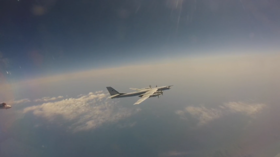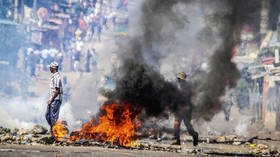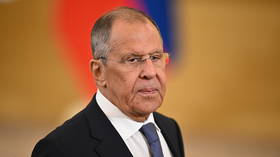Russian and Chinese military planes conduct joint flyover

Russia and China conducted joint air patrols in the Asia-Pacific region on Tuesday, the Russian Defense Ministry has revealed, as Japan and South Korea expressed concerns regarding the flights.
The Russian ministry said in a statement that its Tu-95 strategic missile carriers and Chinese Xian H-6 strategic bombers participated exercises held over the Sea of Japan and the East China Sea. The bombers were escorted by Su-30SM fighter jets.
“The duration of the flight of Russian strategic missile carriers was about 13 hours,” the ministry said.
It also confirmed that “at certain stages of the route, the strategic missile carriers were escorted by F-2 aircraft of the South Korean Air Force and F-15 of the Japanese Air Force.”
However, the ministry emphasized that both Chinese and Russian aircraft “acted strictly in accordance with the provisions of international law” and did not violate the airspace of other countries.
“The event was held as part of the implementation of the military cooperation plan for 2022 provisions, and is not directed against third countries,” the Russian Defense Ministry said.
The air patrols coincided with a meeting between leaders of the US, India, Australia, and Japan at the Quadrilateral Security Dialogue (Quad) summit in Tokyo.
Japanese Defense Minister Nobuo Kishi told reporters that his government had communicated to Russia and to China its “grave concerns” over the “provocative” flyovers, noting that these concerns are related to both Japan’s security and regional security in general. He confirmed that there was no violation of Japanese territorial airspace but emphasized that collaboration between China and Russia was concerning.
“As the international community responds to Russia’s aggression against Ukraine, the fact that China took such action in collaboration with Russia, which is the aggressor, is cause for concern. It cannot be overlooked,” Kishi said.
South Korea’s Joint Chiefs of Staff (JCS) said the Russian and Chinese planes entered and left the Korea Air Defense Identification Zone (ADIZ) in the Sea of Japan several times on Tuesday but never violated South Korea’s airspace.
However, as JCS clarified, Seoul’s air force fighters had to “implement tactical measures” to prepare for a potential contingency.













